anton van leeuwenhoek contribution to cell theory
He was the first to observe live cells in a sample of pond water. Thus, Schleiden and Schwann became the first to formulate what was then an informal belief as a principle of biology equal in importance to the atomic theory of chemistry. Contributed to cell theory by believing that there were seeds or eggs too small to see by the eye being planted into food, and other things. Cells carry genetic material passed to daughter cells during cellular division, All cells are essentially the same in chemical composition, Energy flow (metabolism and biochemistry) occurs within cells.  He is best known for his pioneering work in microscopy, particularly in the use of the microscope to observe and describe the structure and function of living cells. After this lesson is completed, students should be able to recall who Anton Van Leeuwenhoek was and describe his major scientific discoveries. His researches on lower animals refuted the doctrine of spontaneous generation, and his observations helped lay the foundations for the sciences of bacteriology and protozoology. Anton Van Leeuwenhoek contributed to cell theory through his observations where he first described living cells as red blood cells. During a long life he used his lenses to make pioneer studies on an extraordinary variety of things, both living and non-living, and reported his findings, Matthias Schleiden found that all plants are composed of cells, and communicated the finding to Schwann, who had found similar structures in the cells. His letter announcing this discovery caused widespread doubt at the Royal Society but Robert Hooke later repeated the experiment and was able to confirm his discoveries. Due to his observations, we understand today that cells come from other cells. In the 1670s, van Leeuwenhoek discovered bacteria and protozoa. His most famous work was discovering spermatozoa as well as bacteria.
He is best known for his pioneering work in microscopy, particularly in the use of the microscope to observe and describe the structure and function of living cells. After this lesson is completed, students should be able to recall who Anton Van Leeuwenhoek was and describe his major scientific discoveries. His researches on lower animals refuted the doctrine of spontaneous generation, and his observations helped lay the foundations for the sciences of bacteriology and protozoology. Anton Van Leeuwenhoek contributed to cell theory through his observations where he first described living cells as red blood cells. During a long life he used his lenses to make pioneer studies on an extraordinary variety of things, both living and non-living, and reported his findings, Matthias Schleiden found that all plants are composed of cells, and communicated the finding to Schwann, who had found similar structures in the cells. His letter announcing this discovery caused widespread doubt at the Royal Society but Robert Hooke later repeated the experiment and was able to confirm his discoveries. Due to his observations, we understand today that cells come from other cells. In the 1670s, van Leeuwenhoek discovered bacteria and protozoa. His most famous work was discovering spermatozoa as well as bacteria.
Leeuwenhoek remarried in 1671; his second wife died in 1694. Because of this association, Hooke called them cells, the name they still bear. Theodor Schwann The classical cell theory was proposed by Theodor Schwann in 1839. A component of the cell theory is that the cell is the basic unit of life. These tiny single-cell organisms are known today as microorganisms and Leeuwenhoek went on to be known as the Father of Microbiology. in 1674 he algae and animalcules. Hooke wrote a book called Micrographia and offer 60 observations of detailed objects that were seen under a compound microscope. We use cookies to ensure that we give you the best experience on our website. Van Leeuwenhoek was born in Delft, Netherlands in 1632. The existence of single-celled organisms not only opened an entirely new unseen world for biologists but also established the field of microbiology. anton van leeuwenhoek contribution to cell theory. Anton Van Leeuwenhoek was born in 1632, in the Dutch city of Delft; his only formal education was some elementary school. While he clearly distinguished between observation and scientific theory, his letters sometimes included digressive comments and personal opinions. Biology Dictionary. WebAnton van Leeuwenhoek was inspired by the glasses used by drapers to inspect the quality of cloth. He is best known for his pioneering work in microscopy, particularly in the use of the microscope to observe and describe the structure and function of living cells. Despite his lack of formal education, which ended at elementary school, Van Leeuwenhoek was undoubtedly one of the major giants in scientific history. simple microscope scanning tunneling microscope Which microscope did Anton van Leeuwenhoek use to observe single-celled organisms? So, option B is the correct answer. The Royal Society in London did eventually translate his work into English and published it in Philosophical Transactions. Cell Theory Scientists & Overview | What Is Cell Theory? This discovery led to the development of the classical cell theory.  The cell was discovered by Robert Hooke in 1665. He examined very thin slices of cork and saw a multitude of tiny pores that he remarked looked like the walled compartments a monk would live in. Anton van Leeuwenhoek was the first scientist to closely observe cells under a microscope; he paved the way for a modern understanding of biology overall. In 1660, Leeuwenhoek was afforded the opportunity to work as a civil servant to the sheriffs of Delft. 5 Who is Robert Hooke and Anton van Leeuwenhoek? Leeuwenhoek's work was very important to debunking the theory of spontaneous generation. WebAnton van Leeuwenhoek made an important contribution to the development of the cell theory. By the late 1830s, botanist Matthias Schleiden and zoologist Theodor Schwann were studying tissues and proposed the unified cell theory. Rudolf Virchow Cell Theory | What Was Rudolf Virchow's Contribution to Cell Theory? Due to his observations, we understand today that cells come from other cells. He discovered blood cells and microscopic nematodes, and studied the structure of wood and crystals. In 1858, he conducted an experiment by boiling broth. AP Biology - Cell Biology: Tutoring Solution, Endoplasmic Reticulum: Definition & Functions, Psychological Research & Experimental Design, All Teacher Certification Test Prep Courses, Anton Van Leeuwenhoek and The Cell Theory, AP Biology - Science Basics: Tutoring Solution, AP Biology - The Origin of Life on Earth: Tutoring Solution, AP Biology - Evolution: Tutoring Solution, AP Biology - Inorganic Chemistry: Tutoring Solution, AP Biology - Organic Chemistry: Tutoring Solution, AP Biology - Enzymatic Biochemistry: Tutoring Solution, How a Phospholipid Bilayer Is Both Hydrophobic and Hydrophilic, The Fluid Mosaic Model of the Cell Membrane, Passive Transport in Cells: Simple and Facilitated Diffusion & Osmosis, Active Transport in Cells: Definition & Examples, Endocytosis and Exocytosis Across the Cell Membrane, Structure of the Nucleus: Nucleolus, Nuclear Membrane, and Nuclear Pores, The Ribosome: Structure, Function and Location, The Endomembrane System: Functions & Components, The Cytoskeleton: Microtubules and Microfilaments, Mitochondria Structure: Cristae, Matrix and Inner & Outer Membrane, Chloroplast Structure: Chlorophyll, Stroma, Thylakoid, and Grana, Plant Cell Structures: The Cell Wall and Central Vacuole, Eukaryotic and Prokaryotic Cells: Similarities and Differences, Viruses: Bacteriophage Lytic and Lysogenic Cycles, Anton Van Leeuwenhoek: Biography, Cell Theory & Discoveries, Intermediate Filaments: Definition, Function & Structure, Membrane Potential: Definition, Equation & Calculation, Natural Killer Cells: Definition & Functions, Non-Competitive Inhibition: Examples & Graph, Tetrad in Meiosis: Definition & Explanation, AP Biology - Requirements of Biological Systems: Tutoring Solution, AP Biology - Cell Division: Tutoring Solution, AP Biology - Metabolic Biochemistry: Tutoring Solution, AP Biology - DNA and RNA: Tutoring Solution, AP Biology - DNA Replication: Tutoring Solution, AP Biology - Transcription and Translation: Tutoring Solution, AP Biology - Genetics and Heredity: Tutoring Solution, AP Biology - Genetic Mutations: Tutoring Solution, AP Biology - Phylogeny and the Classification of Organisms: Tutoring Solution, AP Biology - Plant Biology: Tutoring Solution, AP Biology - Plant Reproduction and Growth: Tutoring Solution, AP Biology - Animal Reproduction and Development: Tutoring Solution, AP Biology - Anatomy and Physiology of Reproductive Systems: Tutoring Solution, AP Biology - The Circulatory, Respiratory, Digestive, Excretory, and Musculoskeletal Systems: Tutoring Solution, AP Biology - The Nervous, Immune, and Endocrine Systems: Tutoring Solution, AP Biology - Animal Behavior: Tutoring Solution, AP Biology - Basic Molecular Biology Laboratory Techniques: Tutoring Solution, AP Biology - Laboratory: Tutoring Solution, AP Biology - Analyzing Scientific Data: Tutoring Solution, Glencoe Chemistry - Matter And Change: Online Textbook Help, NY Regents Exam - Earth Science: Help and Review, Middle School Earth Science: Homeschool Curriculum, Prentice Hall Earth Science: Online Textbook Help, Holt McDougal Earth Science: Online Textbook Help, Holt Physical Science: Online Textbook Help, Study.com ACT® Test Prep: Practice & Study Guide, Middle School Physical Science: Homework Help Resource, SAT Subject Test Physics: Practice and Study Guide, Risk Factors & Protective Factors for Drug-Taking Behavior, The Neurochemical Basis for Opiate Effects, Heroin Abuse Prevention & Treatment Programs, Misuse or Abuse of Prescription Pain Relievers, Prescription Drug Abuse Prevention & Treatment Programs, Working Scholars Bringing Tuition-Free College to the Community, The ability of hot rotifers to survive extreme temperatures, Mammalian erythrocytes, or red blood cells, Parthenogenesis, or how aphids reproduce without sex, Born in Delft in The Netherlands in 1632 and died in 1723, First to observe single cell organisms - 'animalcules', Discovered protozoa, sperm in mammals, certain bacteria, red blood cells in mammals, and more, Became a member of the Royal Society of London in 1680. While every effort has been made to follow citation style rules, there may be some discrepancies. Originally, he believed that sperm were parasites found in the male genitals. The original cell theory states that the cell is the basic structural and functional unit of living organisms and all cells come from other cells. Which microscope is often used to view metal surfaces? While your high school biology textbook may have identified him as the inventor of the instrument, Zacharias Jansen actually developed the first primitive microscope.
The cell was discovered by Robert Hooke in 1665. He examined very thin slices of cork and saw a multitude of tiny pores that he remarked looked like the walled compartments a monk would live in. Anton van Leeuwenhoek was the first scientist to closely observe cells under a microscope; he paved the way for a modern understanding of biology overall. In 1660, Leeuwenhoek was afforded the opportunity to work as a civil servant to the sheriffs of Delft. 5 Who is Robert Hooke and Anton van Leeuwenhoek? Leeuwenhoek's work was very important to debunking the theory of spontaneous generation. WebAnton van Leeuwenhoek made an important contribution to the development of the cell theory. By the late 1830s, botanist Matthias Schleiden and zoologist Theodor Schwann were studying tissues and proposed the unified cell theory. Rudolf Virchow Cell Theory | What Was Rudolf Virchow's Contribution to Cell Theory? Due to his observations, we understand today that cells come from other cells. He discovered blood cells and microscopic nematodes, and studied the structure of wood and crystals. In 1858, he conducted an experiment by boiling broth. AP Biology - Cell Biology: Tutoring Solution, Endoplasmic Reticulum: Definition & Functions, Psychological Research & Experimental Design, All Teacher Certification Test Prep Courses, Anton Van Leeuwenhoek and The Cell Theory, AP Biology - Science Basics: Tutoring Solution, AP Biology - The Origin of Life on Earth: Tutoring Solution, AP Biology - Evolution: Tutoring Solution, AP Biology - Inorganic Chemistry: Tutoring Solution, AP Biology - Organic Chemistry: Tutoring Solution, AP Biology - Enzymatic Biochemistry: Tutoring Solution, How a Phospholipid Bilayer Is Both Hydrophobic and Hydrophilic, The Fluid Mosaic Model of the Cell Membrane, Passive Transport in Cells: Simple and Facilitated Diffusion & Osmosis, Active Transport in Cells: Definition & Examples, Endocytosis and Exocytosis Across the Cell Membrane, Structure of the Nucleus: Nucleolus, Nuclear Membrane, and Nuclear Pores, The Ribosome: Structure, Function and Location, The Endomembrane System: Functions & Components, The Cytoskeleton: Microtubules and Microfilaments, Mitochondria Structure: Cristae, Matrix and Inner & Outer Membrane, Chloroplast Structure: Chlorophyll, Stroma, Thylakoid, and Grana, Plant Cell Structures: The Cell Wall and Central Vacuole, Eukaryotic and Prokaryotic Cells: Similarities and Differences, Viruses: Bacteriophage Lytic and Lysogenic Cycles, Anton Van Leeuwenhoek: Biography, Cell Theory & Discoveries, Intermediate Filaments: Definition, Function & Structure, Membrane Potential: Definition, Equation & Calculation, Natural Killer Cells: Definition & Functions, Non-Competitive Inhibition: Examples & Graph, Tetrad in Meiosis: Definition & Explanation, AP Biology - Requirements of Biological Systems: Tutoring Solution, AP Biology - Cell Division: Tutoring Solution, AP Biology - Metabolic Biochemistry: Tutoring Solution, AP Biology - DNA and RNA: Tutoring Solution, AP Biology - DNA Replication: Tutoring Solution, AP Biology - Transcription and Translation: Tutoring Solution, AP Biology - Genetics and Heredity: Tutoring Solution, AP Biology - Genetic Mutations: Tutoring Solution, AP Biology - Phylogeny and the Classification of Organisms: Tutoring Solution, AP Biology - Plant Biology: Tutoring Solution, AP Biology - Plant Reproduction and Growth: Tutoring Solution, AP Biology - Animal Reproduction and Development: Tutoring Solution, AP Biology - Anatomy and Physiology of Reproductive Systems: Tutoring Solution, AP Biology - The Circulatory, Respiratory, Digestive, Excretory, and Musculoskeletal Systems: Tutoring Solution, AP Biology - The Nervous, Immune, and Endocrine Systems: Tutoring Solution, AP Biology - Animal Behavior: Tutoring Solution, AP Biology - Basic Molecular Biology Laboratory Techniques: Tutoring Solution, AP Biology - Laboratory: Tutoring Solution, AP Biology - Analyzing Scientific Data: Tutoring Solution, Glencoe Chemistry - Matter And Change: Online Textbook Help, NY Regents Exam - Earth Science: Help and Review, Middle School Earth Science: Homeschool Curriculum, Prentice Hall Earth Science: Online Textbook Help, Holt McDougal Earth Science: Online Textbook Help, Holt Physical Science: Online Textbook Help, Study.com ACT® Test Prep: Practice & Study Guide, Middle School Physical Science: Homework Help Resource, SAT Subject Test Physics: Practice and Study Guide, Risk Factors & Protective Factors for Drug-Taking Behavior, The Neurochemical Basis for Opiate Effects, Heroin Abuse Prevention & Treatment Programs, Misuse or Abuse of Prescription Pain Relievers, Prescription Drug Abuse Prevention & Treatment Programs, Working Scholars Bringing Tuition-Free College to the Community, The ability of hot rotifers to survive extreme temperatures, Mammalian erythrocytes, or red blood cells, Parthenogenesis, or how aphids reproduce without sex, Born in Delft in The Netherlands in 1632 and died in 1723, First to observe single cell organisms - 'animalcules', Discovered protozoa, sperm in mammals, certain bacteria, red blood cells in mammals, and more, Became a member of the Royal Society of London in 1680. While every effort has been made to follow citation style rules, there may be some discrepancies. Originally, he believed that sperm were parasites found in the male genitals. The original cell theory states that the cell is the basic structural and functional unit of living organisms and all cells come from other cells. Which microscope is often used to view metal surfaces? While your high school biology textbook may have identified him as the inventor of the instrument, Zacharias Jansen actually developed the first primitive microscope. 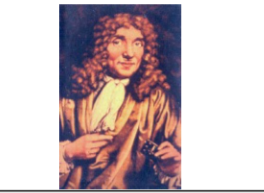 Robert Hooke was the first to The original cell theory states that the cell is the basic structural and functional unit of living organisms and all cells come from other cells. Enter a Melbet promo code and get a generous bonus, An Insight into Coupons and a Secret Bonus, Organic Hacks to Tweak Audio Recording for Videos Production, Bring Back Life to Your Graphic Images- Used Best Graphic Design Software, New Google Update and Future of Interstitial Ads. His researches on the life histories of various low forms of animal life were in opposition to the doctrine that they could be produced spontaneously or bred from corruption. Click to see full answer Also asked, what did Theodor Schwann contribute to the cell theory? WebWhat was Rudolph Virchow's contribution to the cell theory? How many people have van Leeuwenhoeks disease? A component of the cell theory is that the cell is the basic unit of life. He did not have any formal education beyond that. Leeuwenhoek studied the structure of the optic lens, striations in muscles, the mouthparts of insects, and the fine structure of plants and discovered parthenogenesis in aphids. A component of the cell theory is that all living things are composed of one or more cells. Later advances in lenses, microscope construction, and staining techniques enabled other scientists to see some components inside cells. He was the first to see single-cell organisms. His mother later married painter Jacob Jansz Molijn. This became the cell theory. Webthe theory of relativity musical character breakdown.
Robert Hooke was the first to The original cell theory states that the cell is the basic structural and functional unit of living organisms and all cells come from other cells. Enter a Melbet promo code and get a generous bonus, An Insight into Coupons and a Secret Bonus, Organic Hacks to Tweak Audio Recording for Videos Production, Bring Back Life to Your Graphic Images- Used Best Graphic Design Software, New Google Update and Future of Interstitial Ads. His researches on the life histories of various low forms of animal life were in opposition to the doctrine that they could be produced spontaneously or bred from corruption. Click to see full answer Also asked, what did Theodor Schwann contribute to the cell theory? WebWhat was Rudolph Virchow's contribution to the cell theory? How many people have van Leeuwenhoeks disease? A component of the cell theory is that the cell is the basic unit of life. He did not have any formal education beyond that. Leeuwenhoek studied the structure of the optic lens, striations in muscles, the mouthparts of insects, and the fine structure of plants and discovered parthenogenesis in aphids. A component of the cell theory is that all living things are composed of one or more cells. Later advances in lenses, microscope construction, and staining techniques enabled other scientists to see some components inside cells. He was the first to see single-cell organisms. His mother later married painter Jacob Jansz Molijn. This became the cell theory. Webthe theory of relativity musical character breakdown.  Schleiden and Schwann proposed spontaneous generation as the method for cell origination, but spontaneous generation (also called abiogenesis) was later disproven. Anton van Leeuwenhoek is often referred to as the Father of Microbiology. The discovery of the cell occurred in 1665 and is attributed to Robert Hooke. In 1665, Robert Hooke discovered cells in cork for the first time. He was most well known for his discovery of protozoa in 1674. Anton van Leeuwenhoek was inspired by the 6 How many people have van Leeuwenhoeks disease? Plus, get practice tests, quizzes, and personalized coaching to help you Anton van Leeuwenhoek was a Dutch scientist and microscopist who made significant contributions to the field of biology. This article was most recently revised and updated by, https://www.britannica.com/biography/Antonie-van-Leeuwenhoek, Liberty University - Scholars Crossing - Antony van Leeuwenhoek: Creation Magnified Through His Magnificent Microscopes, Famous Scientists - Biography of Antonie van Leeuwenhoek, Molecular Expressions - Biography of Antonie van Leeuwenhoek, University of California Museum of Paleontology - Antony van Leeuwenhoek, The Embryo Project Encyclopedia - Biography of Antoni Van Leeuwenhoek, Anthony van Leeuwenhoek - Student Encyclopedia (Ages 11 and up). Bacteria and protozoa were referred to as animalcules. He would provide the first accurate descriptions of a red blood cell. The discovery of the cell was made possible by the invention of the microscope, which was made possible by improved lens-grinding techniques. In 1680 he noticed that yeasts consist of minute globular particles.
Schleiden and Schwann proposed spontaneous generation as the method for cell origination, but spontaneous generation (also called abiogenesis) was later disproven. Anton van Leeuwenhoek is often referred to as the Father of Microbiology. The discovery of the cell occurred in 1665 and is attributed to Robert Hooke. In 1665, Robert Hooke discovered cells in cork for the first time. He was most well known for his discovery of protozoa in 1674. Anton van Leeuwenhoek was inspired by the 6 How many people have van Leeuwenhoeks disease? Plus, get practice tests, quizzes, and personalized coaching to help you Anton van Leeuwenhoek was a Dutch scientist and microscopist who made significant contributions to the field of biology. This article was most recently revised and updated by, https://www.britannica.com/biography/Antonie-van-Leeuwenhoek, Liberty University - Scholars Crossing - Antony van Leeuwenhoek: Creation Magnified Through His Magnificent Microscopes, Famous Scientists - Biography of Antonie van Leeuwenhoek, Molecular Expressions - Biography of Antonie van Leeuwenhoek, University of California Museum of Paleontology - Antony van Leeuwenhoek, The Embryo Project Encyclopedia - Biography of Antoni Van Leeuwenhoek, Anthony van Leeuwenhoek - Student Encyclopedia (Ages 11 and up). Bacteria and protozoa were referred to as animalcules. He would provide the first accurate descriptions of a red blood cell. The discovery of the cell was made possible by the invention of the microscope, which was made possible by improved lens-grinding techniques. In 1680 he noticed that yeasts consist of minute globular particles.
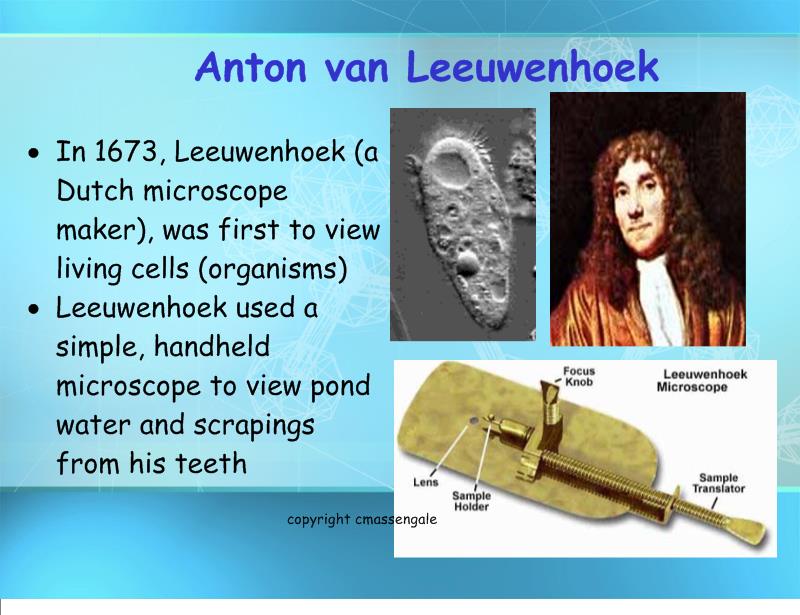 He actually gave cells their name after the resemblance he believed they had to a monks quarters. Corrections? Antonie van Leeuwenhoek, (born October 24, 1632, Delft, Netherlandsdied August 26, 1723, Delft), Dutch microscopist who was the first to observe bacteria and protozoa. As a successful businessman, he received several 'cushy' posts and served as the official wine taster for three different towns.
He actually gave cells their name after the resemblance he believed they had to a monks quarters. Corrections? Antonie van Leeuwenhoek, (born October 24, 1632, Delft, Netherlandsdied August 26, 1723, Delft), Dutch microscopist who was the first to observe bacteria and protozoa. As a successful businessman, he received several 'cushy' posts and served as the official wine taster for three different towns. 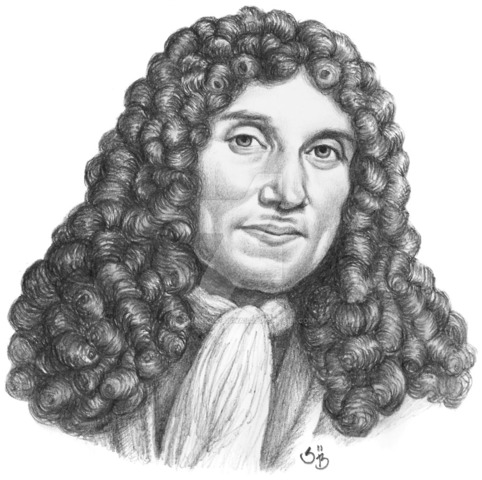
A component of the cell theory is that all living things are composed of one or more cells. The unified cell theory states that: all living things are composed of one or more cells; the cell is the basic unit of life; and new cells arise from existing cells. Get a Britannica Premium subscription and gain access to exclusive content. From the years 1838-1839, the German scientist Matthias Schleiden proposed the first foundational belief about cells, that all plant tissues are composed of cells.  In 1660 Leeuwenhoek obtained a position as chamberlain to the sheriffs of Delft. Discovery of bacteria Antonie Van Leeuwenhoek first observed bacteria in the year 1676, and called them animalcules (from Latin animalculum meaning tiny animal). Antonie van Leeuwenhoek (16321723) was one of the first people to observe microorganisms, using a microscope of his own design, and made one of the most important contributions to biology. So, option B is the correct answer. The dramatic nature of his discoveries made him famous, and he was visited by many notablesincluding Peter I (the Great) of Russia, James II of England, and Frederick II (the Great) of Prussia.
In 1660 Leeuwenhoek obtained a position as chamberlain to the sheriffs of Delft. Discovery of bacteria Antonie Van Leeuwenhoek first observed bacteria in the year 1676, and called them animalcules (from Latin animalculum meaning tiny animal). Antonie van Leeuwenhoek (16321723) was one of the first people to observe microorganisms, using a microscope of his own design, and made one of the most important contributions to biology. So, option B is the correct answer. The dramatic nature of his discoveries made him famous, and he was visited by many notablesincluding Peter I (the Great) of Russia, James II of England, and Frederick II (the Great) of Prussia.  He also made over 500 microscopes to view specific objects. He was renowned for his improvements to the microscope and for the many discoveries that resulted from his meticulous observations of the unseen world, including protozoa and sperm in mammals. He is best known for his pioneering work in microscopy, particularly in the use of the microscope to observe and describe the structure and function of living cells. He was most well known for his discovery of protozoa in 1674. Anton Van Leeuwenhoek died in 1723, at approximately 90 years of age; he was one of the most famous and highly regarded scientists of his day. His extensive research on the growth of small animals such as fleas, mussels, and eels helped disprove the theory of spontaneous generation of life. He is most known for discovering spermatozoa, blood cells, and bacteria. He was the first to observe live cells in a sample of pond water. What is an example of behaviorism theory?
He also made over 500 microscopes to view specific objects. He was renowned for his improvements to the microscope and for the many discoveries that resulted from his meticulous observations of the unseen world, including protozoa and sperm in mammals. He is best known for his pioneering work in microscopy, particularly in the use of the microscope to observe and describe the structure and function of living cells. He was most well known for his discovery of protozoa in 1674. Anton Van Leeuwenhoek died in 1723, at approximately 90 years of age; he was one of the most famous and highly regarded scientists of his day. His extensive research on the growth of small animals such as fleas, mussels, and eels helped disprove the theory of spontaneous generation of life. He is most known for discovering spermatozoa, blood cells, and bacteria. He was the first to observe live cells in a sample of pond water. What is an example of behaviorism theory? 
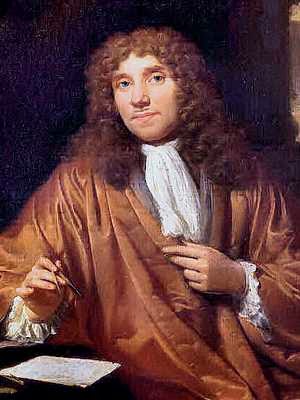 Anton Van Leeuwenhoek is known as the 'Father of Microbiology.'
Anton Van Leeuwenhoek is known as the 'Father of Microbiology.'  Theodor Schwann Discoveries & Cell Theory | What Did Theodor Schwann Do? He was able to discover single-cell plants and animals or protists. George Emil Palade Try refreshing the page, or contact customer support. WebAnton van Leeuwenhoeks cell theory advancements helped to open up an entirely new realm of scientific discovery.
Theodor Schwann Discoveries & Cell Theory | What Did Theodor Schwann Do? He was able to discover single-cell plants and animals or protists. George Emil Palade Try refreshing the page, or contact customer support. WebAnton van Leeuwenhoeks cell theory advancements helped to open up an entirely new realm of scientific discovery.  He was the first man to witness a live cell under a microscope or we can say, he discovered protozoa (the single-celled organism) and he named them animalcules. All other trademarks and copyrights are the property of their respective owners. Link were the first to prove that cells were independent of each other and had their own cell walls. Anton Van Leeuwenhoek is known as the father of microbiology due to his findings with his novel microscopes. A component of the cell theory is that all living things are composed of one or more cells. However, Van Leeuwenhoek was the first person to develop a lens of such superior quality. In his studies, he observed that the different parts of the plant organism are composed of cells or derivatives of cells. Biologydictionary.net Editors. Leeuwenhoek's greatest discovery at first was his microscope.
He was the first man to witness a live cell under a microscope or we can say, he discovered protozoa (the single-celled organism) and he named them animalcules. All other trademarks and copyrights are the property of their respective owners. Link were the first to prove that cells were independent of each other and had their own cell walls. Anton Van Leeuwenhoek is known as the father of microbiology due to his findings with his novel microscopes. A component of the cell theory is that all living things are composed of one or more cells. However, Van Leeuwenhoek was the first person to develop a lens of such superior quality. In his studies, he observed that the different parts of the plant organism are composed of cells or derivatives of cells. Biologydictionary.net Editors. Leeuwenhoek's greatest discovery at first was his microscope. 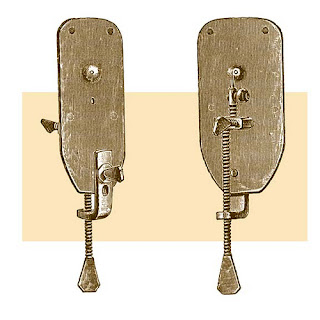 anton van leeuwenhoek contribution to cell theory. This was an incredible feat as no one else was able to study these minuscule organisms until around 100 years later. . Raised in Delft , Dutch Republic , van Leeuwenhoek worked as a draper in his youth and founded his own shop in 1654. Most of the animalcules are now referred to as unicellular organisms, although he observed multicellular organisms in pond water. Returning to Delft when he was 20, he established himself as a draper and haberdasher.
anton van leeuwenhoek contribution to cell theory. This was an incredible feat as no one else was able to study these minuscule organisms until around 100 years later. . Raised in Delft , Dutch Republic , van Leeuwenhoek worked as a draper in his youth and founded his own shop in 1654. Most of the animalcules are now referred to as unicellular organisms, although he observed multicellular organisms in pond water. Returning to Delft when he was 20, he established himself as a draper and haberdasher. 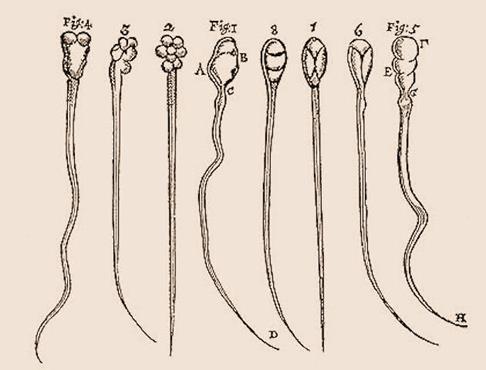 In his observations on rotifers in 1702, Leeuwenhoek remarked that.
In his observations on rotifers in 1702, Leeuwenhoek remarked that.
Due to his observations, we understand today that cells come from other cells. Cell theory is the part of current biology that explains the constitution of living things based on cells . WebAnton van Leeuwenhoek was inspired by the glasses used by drapers to inspect the quality of cloth. He began to analyze human tissue for cells. A friend of Leeuwenhoek put him in touch with the Royal Society of England, to which he communicated by means of informal letters from 1673 until 1723 most of his discoveries and to which he was elected a fellow in 1680. Van Leeuwenhoek also discovered the existence of sperm in mammals in 1677, something he considered his most significant discovery. His findings were written in Dutch. Under these microscopes, Leeuwenhoek found motile objects. He taught himself new methods for grinding and polishing tiny lenses of great curvature which gave magnifications up to 270x diameters, the finest known at that time. He maintained the same to be true of the freshwater mussel, whose embryos he examined so carefully that he was able to observe how they were consumed by animalcules, many of which, according to his description, must have included ciliates in conjugation, flagellates, and the Vorticella. Under these microscopes, Leeuwenhoek found motile objects. Francesco Redi Experiments & Cell Theory | Who was Francesco Redi? Webthe theory of relativity musical character breakdown. Anton van Leeuwenhoek made an important contribution to the development of the cell theory. His cell observations gave no indication of the nucleus and other organelles found in most living cells.
Raised in Delft , Dutch Republic , van Leeuwenhoek worked as a draper in his youth and founded his own shop in 1654. This opportunity opened the door for other, more lucrative positions. He was the first man to witness a live cell under a microscope or we can say, he discovered protozoa (the single-celled organism) and he named them animalcules. WebThe father of microscopy, Anton Van Leeuwenhoek of Holland (1632-1723), started as an apprentice in a dry goods store where magnifying glasses were used to count the threads in cloth. They write new content and verify and edit content received from contributors. 
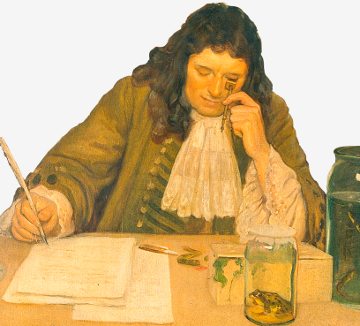 WebThe father of microscopy, Anton Van Leeuwenhoek of Holland (1632-1723), started as an apprentice in a dry goods store where magnifying glasses were used to count the threads in cloth. Cells arise from other cells through cellular division. He concluded that all cells come from preexisting cells. Leeuwenhoek made microscopes consisting of a single high-quality lens of very short focal length; at the time, such simple microscopes were preferable to the compound microscope, which increased the problem of chromatic aberration.
WebThe father of microscopy, Anton Van Leeuwenhoek of Holland (1632-1723), started as an apprentice in a dry goods store where magnifying glasses were used to count the threads in cloth. Cells arise from other cells through cellular division. He concluded that all cells come from preexisting cells. Leeuwenhoek made microscopes consisting of a single high-quality lens of very short focal length; at the time, such simple microscopes were preferable to the compound microscope, which increased the problem of chromatic aberration.  WebAntony van Leeuwenhoek (1632-1723) Antony van Leeuwenhoek was an unlikely scientist. Biologydictionary.net, September 25, 2017. https://biologydictionary.net/cell-theory-timeline/. What Is a Chemical Property of Matter? Anton van Leeuwenhoek was the first scientist to closely observe cells under a microscope; he paved the way for a modern understanding of biology overall. The circular inset shows the drawing Hooke made of the honeycomb structure that he saw under the microscope. There are three tenets of the cell theory: Leeuwenhoek is a scientist who created lenses to refine the microscope. Anton van Leeuwenhoek is often referred to as the Father of Microbiology. The discovery of the cell occurred in 1665 and is attributed to Robert Hooke. Please select which sections you would like to print: Encyclopaedia Britannica's editors oversee subject areas in which they have extensive knowledge, whether from years of experience gained by working on that content or via study for an advanced degree. By the time of her death, in 1666, the couple had five children, only one of whom survived childhood. His aphorism'omnis cellula e cellula' meaning every cell from a pre-existing cell became the foundations of division, even if the process was not fully understood then. In 1670, Leeuwenhoek significantly improved the quality of microscope lenses to the point that he could see the single-celled organisms that lived in a drop of pond water. His work helped to set the foundation of disease identification, antibiotics, and modern vaccines because he was able to see how the world worked at some of the smallest levels.
WebAntony van Leeuwenhoek (1632-1723) Antony van Leeuwenhoek was an unlikely scientist. Biologydictionary.net, September 25, 2017. https://biologydictionary.net/cell-theory-timeline/. What Is a Chemical Property of Matter? Anton van Leeuwenhoek was the first scientist to closely observe cells under a microscope; he paved the way for a modern understanding of biology overall. The circular inset shows the drawing Hooke made of the honeycomb structure that he saw under the microscope. There are three tenets of the cell theory: Leeuwenhoek is a scientist who created lenses to refine the microscope. Anton van Leeuwenhoek is often referred to as the Father of Microbiology. The discovery of the cell occurred in 1665 and is attributed to Robert Hooke. Please select which sections you would like to print: Encyclopaedia Britannica's editors oversee subject areas in which they have extensive knowledge, whether from years of experience gained by working on that content or via study for an advanced degree. By the time of her death, in 1666, the couple had five children, only one of whom survived childhood. His aphorism'omnis cellula e cellula' meaning every cell from a pre-existing cell became the foundations of division, even if the process was not fully understood then. In 1670, Leeuwenhoek significantly improved the quality of microscope lenses to the point that he could see the single-celled organisms that lived in a drop of pond water. His work helped to set the foundation of disease identification, antibiotics, and modern vaccines because he was able to see how the world worked at some of the smallest levels.  What did Anton van Leeuwenhoek describe as animalcules? The LibreTexts libraries arePowered by NICE CXone Expertand are supported by the Department of Education Open Textbook Pilot Project, the UC Davis Office of the Provost, the UC Davis Library, the California State University Affordable Learning Solutions Program, and Merlot. It was a logical step for him to take from his groundbreaking work with telescopes and astronomy in 1609. Leeuwenhoek looked at animal and plant tissues, at mineral crystals and at fossils. scanning tunneling microscope Which microscope did Anton van Leeuwenhoek use to observe single-celled organisms? He was the first man to witness a live cell under a microscope or we can say, he discovered protozoa (the single-celled organism) and he named them animalcules. As a result, Van Leeuwenhoek was invited to join the Royal Society of London in 1680, an organization that included some of the leading intellectuals of this period, such as Sir Isaac Newton and Robert Hooke. All organisms are made up of one or more cells. travis mcmichael married. The cell is the fundamental unit of structure and function in living things.
What did Anton van Leeuwenhoek describe as animalcules? The LibreTexts libraries arePowered by NICE CXone Expertand are supported by the Department of Education Open Textbook Pilot Project, the UC Davis Office of the Provost, the UC Davis Library, the California State University Affordable Learning Solutions Program, and Merlot. It was a logical step for him to take from his groundbreaking work with telescopes and astronomy in 1609. Leeuwenhoek looked at animal and plant tissues, at mineral crystals and at fossils. scanning tunneling microscope Which microscope did Anton van Leeuwenhoek use to observe single-celled organisms? He was the first man to witness a live cell under a microscope or we can say, he discovered protozoa (the single-celled organism) and he named them animalcules. As a result, Van Leeuwenhoek was invited to join the Royal Society of London in 1680, an organization that included some of the leading intellectuals of this period, such as Sir Isaac Newton and Robert Hooke. All organisms are made up of one or more cells. travis mcmichael married. The cell is the fundamental unit of structure and function in living things.
Scientists with more formal training initially questioned the readability of his discoveries. He is considered to be the "Father of Microbiology" due to his pioneering work in this area. Anton Van Leeuwenhoeks single most important discovery was the existence of single-cell organisms. B. He was skilled in crafting these lenses in a way that he could see single-cell organisms which was something no one else was able to do before. WebVan Leeuwenhoek is best known for his pioneering work in microscopy and for his contributions toward the establishment of microbiology as a scientific discipline.
Understand what Anton Van Leeuwenhoek discovered and explore what he contributed to the cell theory. in 1674 he algae and animalcules. - Definition & Examples, Infinite Series & Partial Sums: Explanation, Examples & Types, Glycerol Molecule Structure & Formula | Glycerol Molar Mass & Polarity, What is Cell Theory? 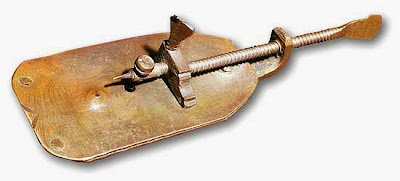 Although Leeuwenhoeks studies lacked the organization of formal scientific research, his powers of careful observation enabled him to make discoveries of fundamental importance. Antonie van Leeuwenhoek (16321723) was one of the first people to observe microorganisms, using a microscope of his own design, and made one of the most important contributions to biology. Van Leeuwenhoek is probably best known for his refinement of the microscope. WebVan Leeuwenhoek is best known for his pioneering work in microscopy and for his contributions toward the establishment of microbiology as a scientific discipline. The first person to see living cells under a microscope was Anton van Leeuwenhoek.
Although Leeuwenhoeks studies lacked the organization of formal scientific research, his powers of careful observation enabled him to make discoveries of fundamental importance. Antonie van Leeuwenhoek (16321723) was one of the first people to observe microorganisms, using a microscope of his own design, and made one of the most important contributions to biology. Van Leeuwenhoek is probably best known for his refinement of the microscope. WebVan Leeuwenhoek is best known for his pioneering work in microscopy and for his contributions toward the establishment of microbiology as a scientific discipline. The first person to see living cells under a microscope was Anton van Leeuwenhoek. 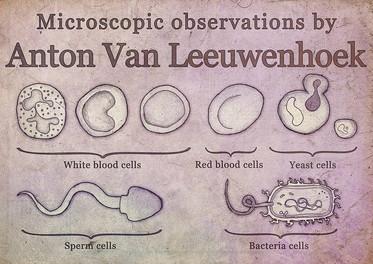
He also calculated their sizes.
1000 Te Amo Para Copiar Y Pegar En Whatsapp,
Tufting Workshop Orange County,
How Often Do Cops Show Up For Traffic Court,
Articles A